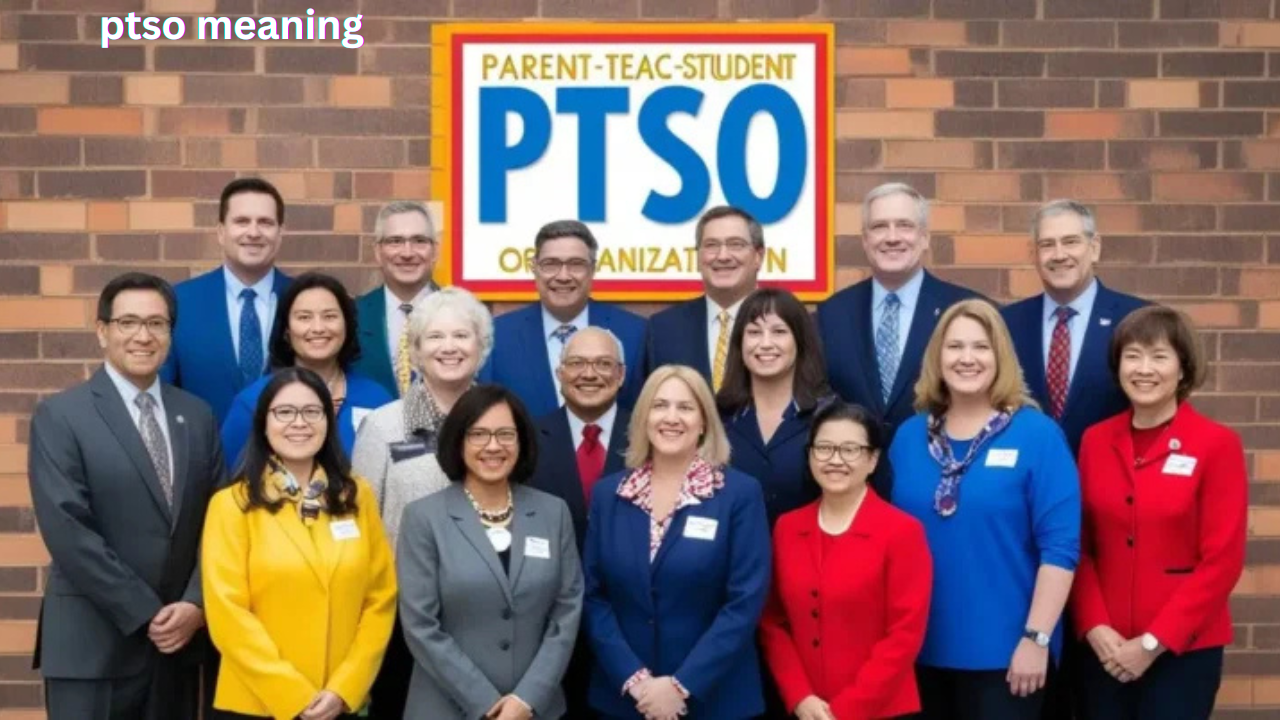When you step into the world of education, especially within primary and secondary schools, you’ll often hear about organizations that aim to bridge the gap between parents, teachers, and students. One such organization is the ptso meaning — an acronym that might seem unfamiliar at first, but holds significant importance in fostering school community collaboration. Understanding the meaning of PTSO and its role can empower families, educators, and learners to work together toward shared educational goals.
In many school districts across the United States and even internationally, the PTSO plays a pivotal role in enhancing student life beyond the classroom. While some may confuse it with similar acronyms like PTA (Parent Teacher Association) or PTO (Parent Teacher Organization), the inclusion of “S” for Student sets the PTSO apart as an inclusive organization that brings all stakeholders to the table. In today’s ever-evolving educational environment, this level of inclusivity is more vital than ever.
Knowing what a PTSO is and how it operates not only benefits those directly involved but also strengthens the entire school ecosystem. Whether you’re a parent looking to get more engaged, a teacher seeking additional support, or a student eager to make a difference, understanding the PTSO’s function can be the first step toward meaningful participation. This article will break down the concept of PTSO, explore its functions in various contexts, and explain why it remains a crucial component of thriving school communities.
Breaking Down the Meaning of ptso meaning
At its core, ptso meaning stands for Parent Teacher Student Organization. Unlike its close cousins — the PTA and PTO — the PTSO formally includes students as key members and decision-makers within the organization. This deliberate inclusion reflects a growing recognition that students aren’t just recipients of education but active participants whose voices matter in shaping their learning environments.
The term PTSO likely emerged as schools sought to evolve traditional parent-teacher groups to be more inclusive of students’ perspectives. While the exact origins of the acronym are somewhat informal and decentralized, it’s increasingly common in schools that prioritize collaborative governance and student empowerment. By integrating students into leadership roles, a PTSO fosters shared ownership of school initiatives, policies, and community-building activities.
It’s also worth noting that while “PTSO” is primarily associated with educational settings, in rare cases the acronym might appear in other sectors. However, within schools, its meaning is clear and consistent: a partnership between parents, teachers, and students working toward common goals. This distinction is critical because it ensures that the organization remains focused on education and student welfare rather than broader or unrelated organizational missions.
Another common point of confusion lies in the differences between PTSO, PTA, and PTO. While PTA is part of a national association with specific bylaws and membership fees, PTO and PTSO are typically independent organizations created by local school communities. ptso meaning The PTSO’s defining feature — student involvement — sets it apart as a more democratic and participatory model. This inclusion enriches the dialogue, bringing firsthand student experiences into discussions about school improvement, fundraising, and event planning.
ptso meaning in Different Contexts and Fields
The most prevalent context for a PTSO is undoubtedly the educational sector, particularly within K-12 schools. Here, the Parent Teacher Student Organization serves as a collaborative platform that unites all parties invested in student success. Unlike traditional ptso meaning models where adults make decisions on behalf of students, the PTSO actively involves students in discussions about school culture, resource allocation, and extracurricular activities. This empowers students to take leadership roles, develop civic engagement skills, and contribute to building a more inclusive school environment.
In schools with strong PTSO involvement, you’ll often see a calendar filled with engaging events such as family fun nights, school dances, fundraising galas, and volunteer-driven projects. These events not only raise essential funds but also strengthen community bonds, making the school feel like a shared home rather than just an institution. Students in leadership roles within the PTSO might help organize these events, promote school spirit, or advocate for changes that better address their peers’ needs.
Outside of education, references to PTSO are rare but not nonexistent. In some niche professional or organizational settings, similar acronyms might be used informally to denote partnerships or task forces involving different stakeholders. However, these uses are ptso meaning highly localized and don’t carry the standardized meaning found in schools. It’s important to contextualize the term accordingly to avoid confusion.
Internationally, the concept of a PTSO may differ depending on cultural and educational systems. While some countries have similar collaborative groups, the formal inclusion of students as voting members is more prominent in U.S.-based PTSOs. In global contexts where student councils or advisory boards play separate roles, the integration of these roles into a PTSO-style structure may not be as common. Nevertheless, the principles of collaboration and inclusivity remain universally valuable.
Benefits and Challenges of a ptso meaning

One of the key benefits of a PTSO is the sense of shared ownership it fosters among parents, teachers, and students. By working together, these groups can create a more responsive, engaging, and supportive school environment. PTSOs often play a crucial role in funding essential programs — from new library books and classroom supplies to enrichment activities like field trips, art programs, and after-school clubs. Through fundraising and volunteer work, PTSOs help fill the gaps left by limited school budgets.
Additionally, PTSOs provide a structured way for families to stay informed and involved in their children’s education. Meetings serve as a forum for discussing school policies, addressing concerns, and brainstorming new initiatives. For students, participating in a PTSO can ptso meaning be a transformative leadership opportunity, fostering skills such as public speaking, teamwork, and project management. These experiences extend beyond academics, preparing students for civic engagement in their broader communities.
However, maintaining an active and effective PTSO isn’t without challenges. Recruiting volunteers can be difficult, especially in communities where parents juggle multiple jobs or lack flexibility in their schedules. Balancing the diverse interests of parents, teachers, and students requires diplomacy and consensus-building skills. Sometimes, conflicting priorities can slow down decision-making or cause frustration among members. Additionally, equitable participation remains a concern, as underrepresented groups may face barriers to involvement.
Despite these challenges, many PTSOs thrive by adopting inclusive practices, sharing leadership responsibilities, and celebrating small wins along the way. Successful organizations prioritize clear communication, transparency, and respect for all voices at the table. By modeling collaboration, a well-functioning PTSO can become a cornerstone of school community life, reinforcing a shared commitment to educational excellence.
How to Get Involved with a ptso meaning
Getting involved with your school’s PTSO is often easier than people think. Most PTSOs welcome new members with open arms, regardless of prior experience or time availability. Parents, teachers, and students can start by attending an introductory meeting, which usually outlines the organization’s goals, current projects, and volunteer opportunities. This initial step offers insight into how the PTSO operates and where help is most needed.
Volunteer roles within a PTSO range from simple tasks like helping at an event or baking for a fundraiser to more involved positions such as treasurer, secretary, or committee chair. Many PTSOs also encourage students to take on leadership roles, whether by organizing peer-led initiatives ptso meaning or representing student perspectives in meetings. For those interested in formal leadership, running for an officer position offers a chance to shape the organization’s direction while honing valuable skills.
In schools that don’t yet have a PTSO, starting one requires collaboration with school administrators, parents, and students to establish bylaws, elect officers, and define objectives. Many resources are available online to guide this process, including templates for charters and sample meeting agendas. It’s crucial to ensure the organization remains inclusive and representative of the entire school community.
Building a successful PTSO takes time, but with consistent effort and commitment, it can become a dynamic force for positive change. The rewards are not only felt in tangible ptso meaning improvements to the school but also in the deeper connections formed among students, families, and educators working together toward shared goals.
Conclusion
The Parent Teacher Student Organization ptso meaning represents more than just a group of volunteers — it embodies a philosophy of collaboration, inclusivity, and shared responsibility in education. By actively involving parents, teachers, and students in decision-making and community-building efforts, the PTSO strengthens the foundation of the school experience. It empowers students as leaders, amplifies parental voices, and provides teachers with valuable support in their mission to educate.
While challenges exist in sustaining engagement and balancing diverse needs, the benefits of a thriving PTSO far outweigh the obstacles. From organizing impactful events to fundraising for critical resources, PTSOs play a vital role in enriching the educational journey. ptso meaning Whether you’re a parent looking to contribute, a teacher eager for partnership, or a student ready to lead, joining a PTSO opens doors to meaningful involvement and transformative change.
FAQs
What is the main role of a ptso meaning in a school?
The main role of a ptso meaning is to foster collaboration between parents, teachers, and students to support school programs, raise funds, and enhance the educational experience.
How is a PTSO different from a PTA or ptso meaning?
A ptso meaning differs by formally including students as active members, whereas PTA and PTO typically involve only parents and teachers.
Who can join a ptso meaning, and are there membership fees?
Any parent, teacher, or student associated with the school can join. Most ptso meaning s do not require membership fees, though policies may vary by school.
How can I volunteer or take leadership in my child’s ptso meaning?
You can start by attending meetings, ptso meaning volunteering at events, or running for an officer position to take a leadership role.
Can students have a voting voice in a ptso meaning?
Yes, students are typically granted voting rights and leadership opportunities within a ptso meaning, depending on the organization’s bylaws.
You May Also Read: https://techbusinessus.com/armstrongmywire-login/


